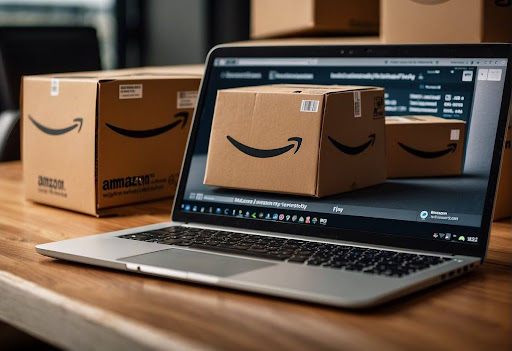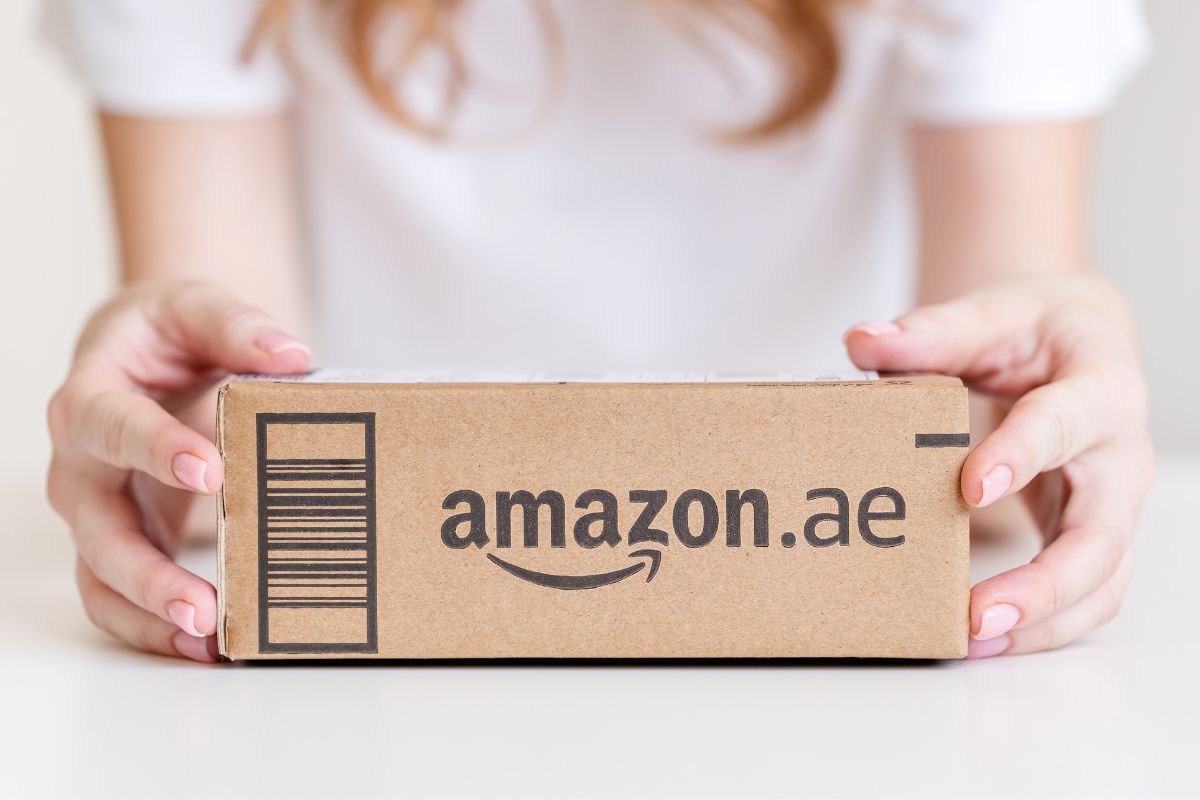Selling on Amazon without inventory might sound counterintuitive, but it’s a strategy that many entrepreneurs harness to enter the e-commerce space without large upfront investments. This methodology leverages Amazon’s vast customer base and logistical prowess while minimizing the financial risks associated with purchasing and storing physical stock. You, as a seller, focus on marketing and customer service, allowing Amazon to handle the fulfillment process.
Dropshipping and print-on-demand are two popular models for operating without inventory on Amazon. With drop shipping, you list products for sale, and when an order is made, you purchase the item from a third party who ships it directly to the customer. Print-on-demand services, on the other hand, enable you to offer custom-designed products which are only created once an order is placed. This eliminates excess production and storage needs, as each item is made to order.
Understanding the nuances of these models is critical in making your Amazon venture profitable and sustainable. Implementing these strategies effectively requires a solid grasp of Amazon’s policies, fee structure, and the optimization of your listings to stand out in a competitive marketplace. It’s about playing a careful balancing act between cost-effectiveness and customer satisfaction, ensuring that while you don’t handle inventory, your customers still receive quality products in a timely manner.
Understanding the Amazon Marketplace
When venturing into the world of Amazon selling, it’s crucial to grasp the dynamics of its marketplace. As an online marketplace, Amazon operates as a powerful platform that accommodates a diverse range of sellers and customers.
The marketplace is poised to facilitate transactions between you and the end customer, while maintaining a high degree of customer trust. This is achieved through rigorous policies and a dedication to ensuring a safe, reliable shopping experience. Here’s what you need to know:
- Without Inventory: You don’t need to manage physical stock. Through models like dropshipping or Amazon’s Fulfilled by Amazon (FBA) service, you can sell without handling the actual products.
- Marketplace Dynamics: It’s competitive. Your product listing needs to stand out, and understanding Amazon’s pricing, reviews, and ranking systems is essential.
- Customer Trust: Amazon has built-in mechanisms for protecting customers, reinforcing trust in your business.
- Amazon Business: This is a B2B marketplace on Amazon, catering to the needs of businesses buying in bulk.
| Feature | Benefit |
| Global reach | Access to a vast customer base |
| Prime delivery | Attract customers looking for fast shipping |
| Customer service | Amazon handles customer inquiries and returns |
Remember, your success on the Amazon Marketplace hinges on your adaptability to its environment and rules. Play by Amazon’s guidelines, and you could potentially tap into a massive pool of eager buyers.
Benefits of Selling on Amazon Without Inventory

In the bustling marketplace of Amazon, selling without inventory presents substantial advantages, including reduced overhead costs and a more agile business model. Here’s how you can leverage these benefits to optimize your online venture.
Minimized Risk and Lower Costs
Without inventory, you eliminate the need for warehousing, which significantly reduces storage costs. You’re not stuck with unsold items, so there’s less financial risk involved. This model cuts down on:
- Initial investment: No bulk purchase required.
- Ongoing fees: Avoid monthly storage fees and long-term inventory charges.
Shipping is also handled by suppliers or through dropshipping arrangements, so you don’t bear the brunt of shipping costs, either.
Increased Flexibility and Scalability
Your business gains remarkable flexibility without inventory, allowing you to adapt to market trends with ease. Moreover, scalability becomes smoother since you’re not tied to physical stock levels. Consider these points:
- Product range expansion: Test new products without upfront investment in stock.
- Market responsiveness: Quickly adjust your offerings based on consumer demands.
By diminishing the reliance on inventory, you can pivot without the operational headaches that often accompany inventory management.
Popular Models for Inventory-Free Selling

Selling on Amazon without maintaining an inventory is highly feasible through various models that leverage third-party services and innovative approaches to order fulfillment. Here are some of the most effective methods.
Dropshipping Explained
In dropshipping, you list products for sale without stocking them. When a customer places an order, you purchase the item from a third party, which ships it directly to the customer. This model’s success hinges on tight coordination with your supplier and meticulous oversight of fulfillment processes to ensure customer satisfaction.
Print on Demand (POD)
Print on Demand allows you to offercustom-printed products like books, t-shirts, and more. A POD service creates the product only after a customer has made a purchase, so you don’t need to buy in bulk or hold inventory. You design the product and set up listings, and the print provider handles the rest.
Selling Digital Products
You can also sell digital products on Amazon, which include ebooks, courses, software, and music. Once you’ve created your digital goods, customers can download them without the need for physical shipping. This method offers high margins as there’s no need to worry about inventory management or physical fulfillment.
Retail and Online Arbitrage
Arbitrage involves buying products from retail stores or online marketplaces at a lower price and reselling them on Amazon at a markup. It’s a way of leveraging price discrepancies to your advantage. You’ll need to be savvy in finding deals and understand the Amazon marketplace’s pricing dynamics to make this work effectively.
Setting Up Your Amazon Seller Account

To successfully sell on Amazon without inventory, you’ll need to set up an Amazon Seller Account effectively, which involves choosing the right account type, crafting engaging product listings, and thoroughly understanding Amazon’s regulations.
Choosing Account Type
Amazon offers two types of seller accounts: Professional and Individual. As a Professional seller, you pay a monthly subscription fee but no per-item selling fee, which may be beneficial if you plan on selling more than 40 items a month. Individual sellers don’t pay a monthly fee but do pay $0.99 per item sold, making this option more suitable for sellers with low sales volumes.
Creating Engaging Product Listings
Your product listing is your chance to attract buyers. Start with a compelling title that includes important keywords. Use high-quality images and write a clear, concise description of the product’s benefits and features. Bullet points should highlight the most critical aspects, making the information easy to digest. Remember, even without inventory, your listing should accurately reflect what the drop shipper or third-party provider will supply.
Understanding Amazon’s Rules and Regulations
Familiarize yourself with Amazon’s rules and regulations to ensure compliance and avoid account suspension. This includes adherence to price, image, and content policies, understanding tax obligations, and following the guidelines for customer interactions. Staying informed about these rules is crucial for maintaining a good standing with Amazon and for fostering trust with your customers.
Leveraging Amazon Fulfillment Options

When selling on Amazon without maintaining your own inventory, your focus should be on understanding and selecting the right fulfillment method. Your choice impacts your operational workload, shipping speed, costs, and the customer service experience.
Fulfillment by Amazon (FBA) vs. Fulfillment by Merchant (FBM)
Fulfillment by Amazon (FBA) is a service where Amazon stores your products in its fulfillment centers. When a customer places an order, Amazon handles the packing, shipping, and customer service. Choosing FBA allows you to take advantage of Amazon’s vast logistics network and can result in faster shipping times and eligibility for Prime status. However, you do need to pay for storage space and fulfillment fees, which vary based on item size and weight.
Fulfillment by Merchant (FBM), on the other hand, gives you more control over your inventory and shipping processes. You store your items and handle all aspects of order fulfillment. This method could potentially reduce costs if you already have a streamlined logistics setup. However, you’re responsible for the customer service and returns, which can become time-consuming as your business scales.
Partnering with Third-Party Fulfillment Centers
Partnering with third-party fulfillment centers can be an alternative to FBA while alleviating the burden of FBM. These centers work similarly to FBA, but they aren’t Amazon-owned. They can store your products, pack, and ship orders on your behalf. Often, they provide customizable services at competitive rates and may offer more flexible storage options than Amazon’s FBA.
Partnering with a third party can help you diversify your fulfilment strategies and may offer cost benefits, depending on your specific needs. However, since your products won’t be in Amazon’s fulfilment network, you won’t have access to Prime status through this method, which might impact your products’ visibility and customers’ purchase decisions.
Finding the Right Products and Suppliers

When you set out to sell on Amazon without inventory, your success hinges on identifying profitable products that meet market demand and securing reliable suppliers. Thorough research and strategic relationships are the cornerstones of a prosperous dropshipping or arbitrage business.
Analyzing Market Demand and Competition
To pinpoint a profitable niche, examine the marketplace to understand what consumers are buying and seeking. Utilize tools like Amazon’s Best Sellers and Trending lists to gauge demand and competition. Keep a close eye on customer reviews and ratings; this can reveal underserved areas ripe for opportunity. Products with high demand but lower competition can be a sweet spot for your business.
- Look for categories with:
- High sales rank
- Moderate to low competition
- Positive customer feedback
Sourcing Products from Reliable Suppliers
Finding reliable suppliers is critical. Start by exploring wholesale directories or attending trade shows to discover wholesale suppliers who can provide a steady stream of products. When evaluating potential suppliers, consider:
- Their reputation and reliability
- Shipping and handling capabilities
- Ability to scale with your growing business
Forge relationships with suppliers you trust and who understand e-commerce dynamics. They should be able to handle fluctuations in demand and fulfil orders promptly. Remember, your supplier’s reliability directly impacts your customer satisfaction and reviews on Amazon.
Pricing Strategies for Maximum Profit

When selling on Amazon without inventory, your approach to pricing is pivotal for maintaining healthy profits. Since you’ll be relying on drop-shipping or print-on-demand models, your margins depend heavily on how effectively you price your products.
Understand Amazon’s Commission: First, be aware of how Amazon’s commission structure will impact your profits. Factor in these fees when determining your price point to ensure you’re not operating at a loss.
Cost-Based Pricing: Set a baseline price by calculating your total costs, which include the price of the item from your supplier and Amazon’s fees, then add a markup for profit. This ensures you cover costs while earning a consistent margin.
Dynamic Pricing: Implementingdynamic pricing strategies can significantly boost your profits. Tools that adjust prices based on demand, competition, and sales trends can help you stay competitive. Products with a unique selling point can often demand higher prices, capitalizing on their uniqueness.
Market-Oriented Pricing: Scout your competition on Amazon and set your prices accordingly. If you’re offering a similar product, competitive pricing could be your best bet. For products with less competition, you might enjoy the luxury of setting higher prices.
| Strategy | Description | Key Benefit |
| Cost-based | Cover costs and add profit margin | Stable Profit |
| Dynamic | Adjust prices to market conditions | Stay Competitive |
| Market-oriented | Price based on competition | Optimize Sales and Profit |
Keep your eyes peeled on market trends and adjust your prices to what the market will bear. With proper execution of these pricing strategies, you can maximize your potential on Amazon’s massive e-commerce platform.
Marketing Your Products on Amazon

To effectively market your products on Amazon without inventory, focus on crafting high-quality product listings and refining your approach to garner customer trust through reviews.
Optimizing Product Listings for Search
Your product listing is the cornerstone of visibility on Amazon. Start by integrating relevant keywords into your title, bullet points, and description, ensuring that the Amazon algorithm understands and accurately targets your product. Ensure that each product image is high-resolution and illustrates the item from multiple angles, as this directly impacts click-through rates.
Here’s a breakdown to optimize listings:
- Title: Include primary keywords that accurately describe your product. Keep it clear and concise.
- Bullet Points: Highlight key features and benefits using targeted secondary keywords.
- Description: Provide detailed information, incorporating long-tail keywords to cast a wider net for searches.
Remember, clarity is key, and keyword stuffing can negatively affect your listing’s performance.
Building Customer Reviews and Ratings
To build your products’ customer reviews and ratings on Amazon, actively encourage satisfied customers to share their experience. Product reviews serve as social proof and greatly influence buyers’ decisions. Start by offering excellent customer service and follow up with buyers via email to request a review, ensuring compliance withAmazon’s policies.
Consider these strategies:
- Automate requests: Use Seller Central tools to send polite review requests after purchase.
- Stay engaged: Respond to reviews, showing customers and prospects that you value their feedback.
By focusing on these methods, you can enhance your Amazon presence without needing to handle physical inventory.
Customer Service Excellence and Post-Sale Processes

After making a sale on Amazon without inventory, your focus should shift to customer service excellence and streamlining post-sale processes. These aspects are critical for maintaining customer satisfaction and positive brand reputation. In this section, you’ll discover specific strategies for managing returns and providing exceptional customer support without the need for physical inventory.
Managing Returns
When you sell products on Amazon without holding inventory, it’s crucial to have a well-defined returns management process. Work with your suppliers to understand their return policies and ensure they align with Amazon’s guidelines. Outline a clear returns process for your customers, specifying:
- How to request a return: Provide a step-by-step guide or easy-to-follow flowchart.
- Time frame for returns: Clearly state the time window in which customers can return products.
- Condition of goods: Explain the required condition for returned items, such as ‘unused’, ‘in original packaging’, etc.
- Refund process: Describe how and when customers will receive their refund.
Make sure you communicate these policies transparently on your product pages to minimize misunderstandings.
Customer Support
Exceptional customer support is a key component of your post-sale processes. Establish quick and responsive support channels such as email, phone, or live chat. Here’s how you can ensure efficient support:
- Availability: Inform customers of your support hours and average response times.
- Quality control: Regularly train your support team on product knowledge and customer service best practices.
- Solution-Oriented Approach: Strive to resolve issues during the first contact whenever possible.
- Feedback Loops: Use customer feedback to continuously improve your products and support.
Your support team’s ability to provide consistent, accurate information will contribute to a smooth post-purchase experience for your customers. Remember, building a reputation for reliable customer service can directly impact repeat business and overall success on Amazon.
Leveraging Analytics and Reporting

When selling on Amazon without physical inventory, mastering analytics and reporting is crucial for your success. Amazon’s analytics tools can empower you to make data-driven decisions, understand consumer behaviour, and optimize your e-commerce sales.
Reporting features provide detailed insights into your performance. You can monitor metrics like page views,conversion rates, and buyer demographics to gauge yourproduct’s appeal. Use these numbers to refine your marketing and pricing strategies. Regularly reviewing report summaries allows you to spot trends, adapting your approach to what’s working best.
Analytics tools allow for a deeper dive into data. For instance, trackPrime eligibility and its impact on sales. Products with Prime eligibility often see a lift in consumer trust and purchase likelihood. By staying informed through Amazon’s reporting, you can ensure your products remain attractive to Prime users.
E-Commerce sales data reveals the effectiveness of your online presence. Analytic platforms can break down sales by geography, time, and other demographics. Knowing what drives your sales, you canoptimize listings to appear more prominently in search results and improve customer satisfaction.
Utilize the following practical steps to harness the power of analytics and reporting:
- Monitor Daily: Check your analytics dashboard daily to stay current with sales trends.
- Prime Eligibility: Ensure your products maintain Prime eligibility to capitalize on Amazon’s vast customer base.
- Act on Data: Use insights from reporting tools to adjust your sales strategies promptly.
By focusing on these key aspects, you can confidently navigate Amazon’s marketplace and drive sales without holding inventory.
Scaling Your Amazon Business

When you aim to scale your Amazon business, focus on expanding product offerings and refining operational workflows to manage increased order volumes effectively.
Expanding Product Selection and Categories
To cater to a wider audience and boost your sales on the Amazon platform, it’s crucial to broaden your range of products. Start by conducting market research to identify in-demand categories that align with your brand. Once identified, partner with reliable manufacturers to source these new products. Remember, you won’t need to stock inventory; you can leverage dropshipping or Amazon’s own fulfillment services to handle it for you. This approach allows you to offer a diverse selection without the risk and expense of holding inventory.
- Identify trending categories through market analysis.
- Partner with manufacturers for product sourcing.
- Utilize Amazon’s fulfillment services to handle inventory.
Managing High Order Volumes and Operational Workflow
As your business grows, so will the volume of orders. It’s essential to have a strong operational workflow to keep up with the demand. Streamline your process from order received to dispatch. This might involve automating certain tasks or employing an order management system. Such systems will help in keeping track of sales, inventory levels, and customer interactions, ensuring nothing slips through the cracks as order numbers soar.
- Automate repetitive tasks to enhance efficiency.
- Implement an order management system to track sales and inventory.
By focusing on expanding your product selection and improving upon your operational workflows, you’re well on your way to successfully scaling your Amazon business in the ever-evolving world of e-commerce. Engage with your customers and adapt to the changing market to maintain growth and meet the needs of your expanding customer base.
Advanced Techniques and Alternate Platforms

When selling on Amazon without inventory, it’s vital to explore alternate sales channels and consider on-demand production platforms. By diversifying your approach, you can minimize risk and potentially unlock new streams of passive income.
Exploring Alternate Sales Channels Beyond Amazon
Walmart Marketplace offers a compelling alternative, enabling you to reach a wide customer base without needing to maintain your own inventory. Like Amazon, Walmart has a robust system for sellers, but with distinct demographics and less competition. Third-party logistics providers (3PL) can help you fulfill orders on platforms like Walmart, handling storage, shipping, and returns, which means you don’t need to physically hold the products you sell.
Similarly, Handmade, especially for artists and crafters, presents opportunities to sell custom-made products without traditional inventory. Products on this platform are made to order, so there’s no need to keep stock in advance.
Merch by Amazon and Kindle Direct Publishing (KDP)
Merch by Amazon offers a no-inventory-needed approach to selling custom apparel. You create and upload designs, and Amazon handles production and shipping once a customer makes a purchase. This service is an exceptional way to create passive income, as your focus is solely on design—Amazon takes care of the rest.
Conversely, Kindle Direct Publishing (KDP) allows you to publish your own books with no upfront costs for printing. Your literary work is printed on demand whenever a customer makes a purchase. This method is not only cost-effective but also allows for greater creative control and a faster route to market compared to traditional publishing.
Frequently Asked Questions
In this section, you’ll find concise answers to help you understand the dynamics of selling on Amazon without having to maintain your own inventory. You’ll learn about dropshipping, the tools needed for FBA, the potential of digital products, strategies to sell without inventory, legalities of reselling, and how to get started with no capital.
What are the basics of dropshipping with Amazon as a beginner?
As a beginner to dropshipping with Amazon, it’s important to find a reliable supplier, focus on customer service, and be familiar with Amazon’s policies on dropshipping. You will manage the sales, while your supplier handles the inventory and shipping.
Which tools are essential for someone interested in FBA (Fulfillment by Amazon)?
When entering Fulfillment by Amazon, key tools include inventory management software, price tracking tools, and analytics services to help you make informed decisions about restocking inventory and pricing your products.
Can digital products be a profitable segment on Amazon, and how does one sell them?
Yes, digital products can be quite profitable as they require no physical inventory. To sell digital products on Amazon, you’ll need to focus on creating high-quality content and leveraging Amazon’s Kindle Direct Publishing for eBooks, or AWS for software and SaaS products.
What strategies exist for selling on Amazon without purchasing inventory upfront?
Utilizing the dropshipping model or participating in FBA with goods sourced from third-party sellers allows you to sell on Amazon without holding inventory yourself. Both methods rely on partnering with suppliers who fulfill orders on your behalf.
What are the legal considerations when reselling products from other companies on Amazon?
When reselling products, ensure you have the necessary permissions from the original brand or supplier, avoid infringing on intellectual property, and comply with Amazon’s policies to maintain your seller privileges.
How can newcomers leverage Amazon’s platform to earn income with no starting capital?
Newcomers can start earning income with no capital by using the Amazon affiliate program, where you earn commissions by referring customers. Another approach is to use print-on-demand services for merchandise sales or digital products to capitalize on Amazon’s vast customer base.



